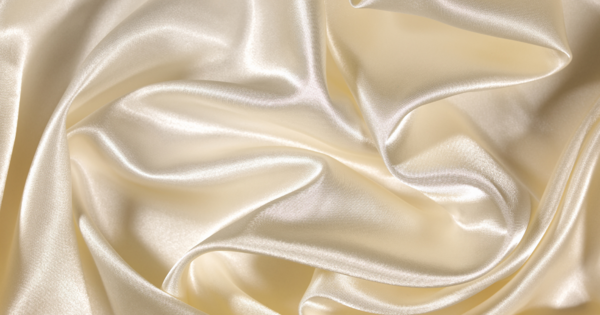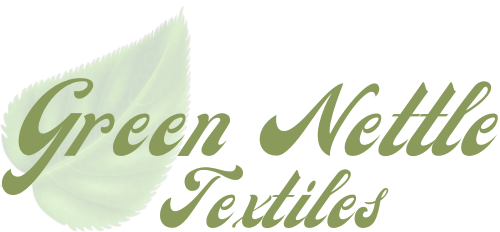Because you will spend most of your life with some fabric against your skin, it’s only natural that you be concerned about how comfortable each material you choose feels on your skin.
You’re not alone in this; recent trends show that more people are paying as much attention to the softness and feel of the fabric and its beauty. Soft materials are more comfortable, so this article will focus on at least five suitable fabrics that give you the most comfort.
What is a Fabric?
A fabric is any material produced from intricately weaving or knitting several thread fibers together. The threads could be from natural sources like cotton, linen, or cashmere. However, some fabrics, such as polyester, are produced artificially called synthetic materials, and natural fabrics are usually softer than synthetic fabrics.
Some Types of Soft Fabrics
Here are some soft fabrics currently in the textile market. Due to their unique mild properties, textile workers use them similarly:
1. Cotton Fabrics

Cotton is one of the most popular fabrics in the market. It is a versatile fabric used to make a wide range of products, from clothing to medical equipment. Cotton fabric is organic, coming from the bolls of the cotton plant. Cotton is not only one of the most popular fabrics but also one of the oldest fabrics, with usage being traced back to 5000 BCE.
Most cotton fabrics in the market are woven cotton, although it is possible to knit them. Both knit and woven cotton are breathable and hypoallergenic; they have a soft feel and are very good for sensitive skin. Several forms of cotton are used to make baby clothes as they don’t irritate the delicate skin of babies.
Some types of cotton fabrics, such as cotton gauze, are so delicate that they are often used for wound dressings, while many consider Pima cotton and Egyptian cotton to be some of the softest fabrics in the world.
2. Linen Fabric

Linen fabric is also a type of organic fabric produced from the stems of the flax plant. Linen is almost as famous as the cotton fabric but with one disadvantage- the production of linen is much more time and resource intensive.
Linen fabric is an ancient fabric, with evidence showing that Neolithic men in Europe have been using some form of linen fabric for over 36,000 years. The Ancient Egyptians, Greeks, and Irish have also manufactured and used linen fabric at various points in history.
Linen is hypoallergenic and breathable; it has a lower thread count and looser weave structures. The texture of linen tends to be coarser at first but becomes softer with repeated washing. Linen also traps less dust and particles, making them ideal for use by those with sensitive skin and allergies.
Textile manufacturers commonly use linen to make most household items; they also use it to make anything that cotton or wool is used to make. Linen products include shirts, dresses, blazers, jackets, vests, lingerie, and a wide range of other casual and formal wear.
3. Cashmere Fabric

Cashmere is a type of woolen fabric obtained from the hair of a specific type of goat native to the Kobir Desert called the Kashmir goat. Nomadic herders shear the strands of the goat, carefully comb them into straight lines, and spin them into fine yarn.
Evidence shows that Kashmir goats have been bred in the Asian regions of Mongolia and Kashmir for many centuries. Nowadays, China is the primary producer as many companies strive to create cashmere ethically.
Cashmere is an exceedingly soft fabric regarded as one of the most delicate and luxurious fabrics. Textile workers weave the fine cashmere yarns into the highly dense material that is ultimately thin and doesn’t insulate as much as typical wool fabric.
The softness of cashmere makes it possible to wear directly on the skin without irritating it. The fabric is valuable for making underwear, undershirts, scarves, sweaters, and other light cold-weather gear.
4. Silk Fabric

Silk is generally considered one of the strongest natural fabrics currently in use. Most of the world’s silk supply comes from insect larvae’s natural protein fiber called fibroin. The most popular insect larva used is the species Bombyx mori which only lives on the Mulberry tree.
Silk traces its origin to China as early as 6500 BCE. Although the most preferred silkworms grew in the wilds of China, India, and some parts of Europe, these wild worms were not enough to set up a commercial silk textile industry. The Chinese established silk farms, an act called Sericulture, and eventually found a giant silk trade.
Despite being strong, many value silk for its incredibly soft and luxurious texture. Natural silk is also highly durable and lightweight and would rarely irritate the skin. The high cost of rearing and extracting silk from silkworms makes the fabric incredibly expensive, although many now go for its cheaper synthetic alternative.
Many textile manufacturers use silk to make consumer apparel like scarves, shirts, blouses, and evening wear. Due to their softness, they are also popular fabrics for underwear and lingerie; they make good curtains, pillows, and wall hangings.
5. Bamboo Fabric

Bamboo fabric is one of the most controversial fabrics currently in production; it refers to several materials produced from the bamboo plant. But while it is one of the cheapest and highest quality fabrics in circulation, it is often flagged as being environmentally unsafe in most cases.
Bamboo textiles have been around for thousands of years, but the production method was only perfected in the 20th century. Most bamboo textiles are natural, but some, like rayon, are semi-synthetic.
Production of bamboo fabric is often a lengthy and complicated process. Textile manufacturers obtain cellulose from wood pulp and break them down by exposing them to chemical solvents. It is then pressed into sheets, spun into strands, and immersed in sulphuric acid to form filaments. The filaments are spun into yarns and used in making bamboo fabrics.
Despite its dubious environmental reputation, bamboo textiles are one of the softest fabrics you can get. It is a suitable replacement for cotton and, in some cases, is preferred, and its softness makes them particularly popular for underwear and socks. Bamboo textiles are also ideal for household items such as hand towels, blankets, and sheets.
